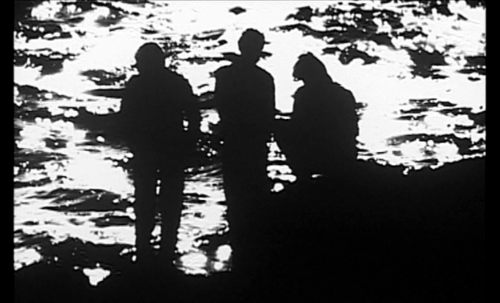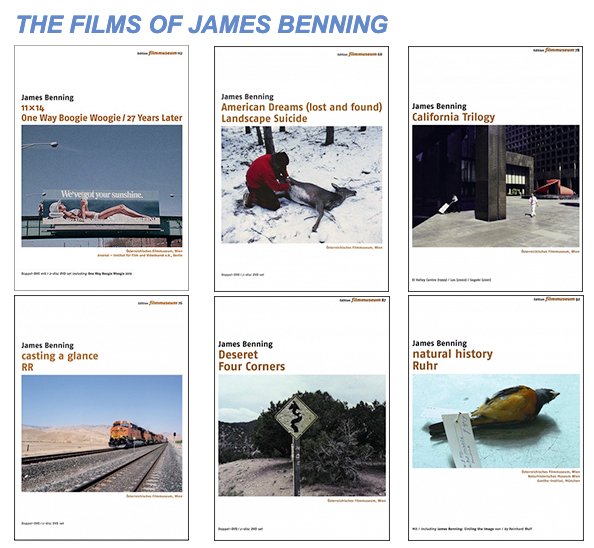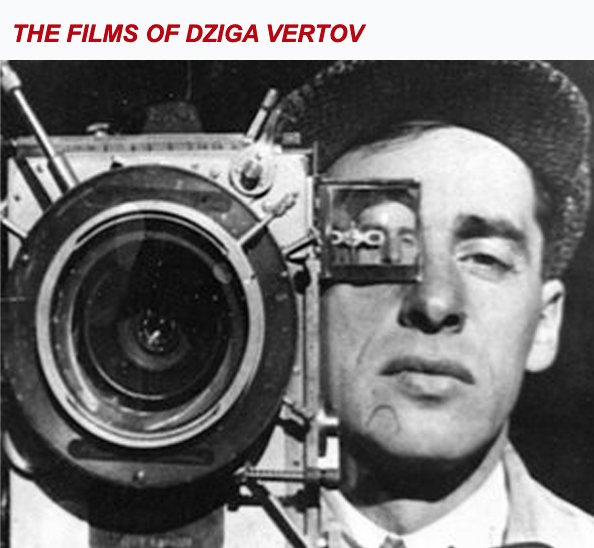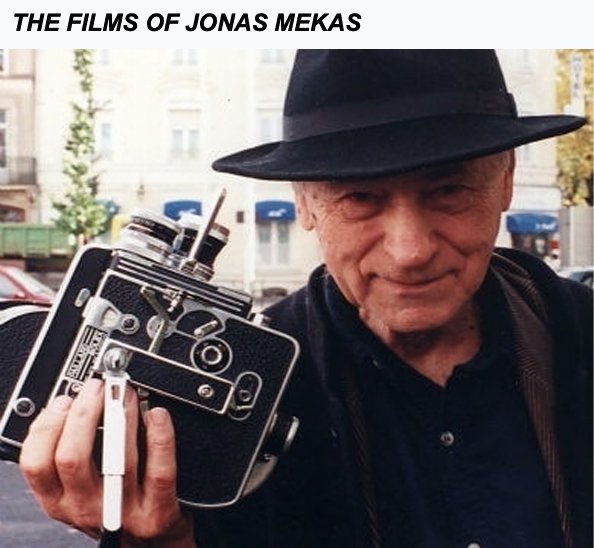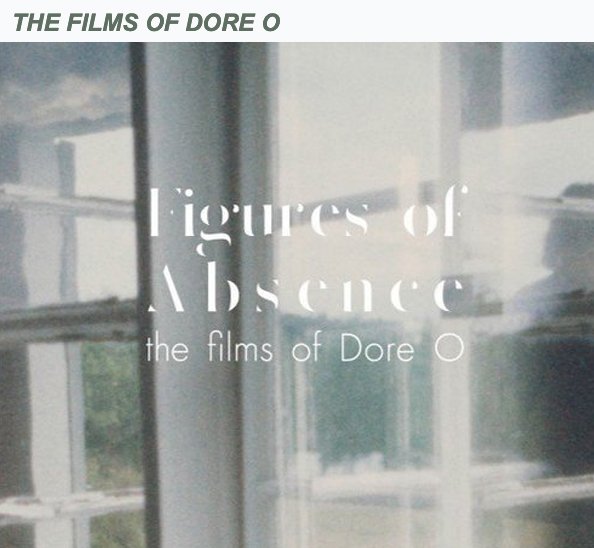THEMATIC COURSE SUGGESTIONS FROM GME AND MORE AS WE HEAD INTO FALL
/Looking ahead to the fall semester, GME would like to remind our buyers in the academic community of some of our popular titles that can be utilized for thematic teaching purposes, while also preparing them for a selection of new titles from Kino Lorber, Re:voir, Index Edition, Edition Filmmuseum, and others, soon to be released as downloadable DSL files and Disk/DSL bundles through GME Streamline. We would also like to remind our buyers of the free streams of related DSL releases running continuously on GME Streamline. Our current offering is Virgil Widrich's inventive found footage film, BACK TRACK.
◊
Over the past few years, as an intended teaching tool, we have devised thematically organized groupings of important work distributed by GME that we feel help to promote the cross-fertilization of visual, aesthetic and social ideas among related films. These featured collections are as follows:
During the 1920s, painters, photographers, and other artists in Europe and the United States, through the medium of film, furthered their ideas about the kinetic and plastic qualities of art. A genre of “city symphony” films emerged. These films were structured around the day in the life of a metropolis, from sunrise to sunset. Primarily employing techniques of straight photography, privileged camera positions and rhythmic editing patterns were employed to visualize representation of the objective world. Includes films by Walther Ruttmann, Dziga Vertov, Jay Leyda, José Val del Omar, James Benning, Vivian Ostrovsky and others.
FILMS ON WORLD WAR I AND ITS AFTERMATH
GME presents a curated collection of titles related to this international conflict. Two of these films – BEHIND THE DOOR (1919, produced by Thomas H. Ince) and J’ACCUSE (1919, directed by Abel Gance) – depict wartime on the high seas of the Atlantic and the battlefields of France. Several other films depict the ravages following the end of the conflict in war-torn Vienna and Berlin – G.W. Pabst’s THE JOYLESS STREET (1925) and four films by director Gerhard Lamprecht – SLUMS OF BERLIN (1925), CHILDREN OF NO IMPORTANCE and THE PEOPLE AMONG US (both 1926), and UNDER THE LANTERN (1928). FRAGMENT OF AN EMPIRE (1929, USSR, Friedrik Ermler), recounts the reawakening of a shell-shocked soldier during the Great War to a rapidly transformed nation as a result of the Bolshevik Revolution.
Found Footage filmmakers hold a significant place within the canon of the experimental and avant-garde filmmaking oeuvre. Creative film artists have employed previously filmed footage obtained from various sources, and originating from other film genres – including home movies, newsreels, educational films, scientific studies, industrial films, and fiction films – to fashion their own distinctive visions of cinematographic texture and textual meaning. These range from explorations of the materiality of the celluloid film stock, studies of time and motion, power and gender representation, construction of geographical travel diaries, deconstruction of political messaging, and evocation of emotional states of being. Includes films by Abigail Child, Gustav Deutsch, Holly Fisher, Alfred Kaiser, Mark Rappaport, Jay Rosenblatt, Virgil Widrich, Peter Tscherkassky, and others.
From the inception of cinema through some of its most dramatic stylistic and aesthetic developments, France has been, and continues to be, the source of many of film's most notable creators, directors and performers, as well as many of the medium's greatest artistic triumphs. Among the titles available from GME are key works from various periods and movements: early cinema, the apogee of silent filmmaking in the late 1920’s, larger artistic practices (including Dada, Surrealism, and Lettrism), experimental cinema, the Nouvelle Vague, and the fiercely independent and political films from the Zanzibar Group. Filmmakers in this collection include Georges Méliès, Germaine Dulac, Louis Feuillade, Abel Gance, Marcel L’Herbier, Marcel Hanoun, Isidore Isou, Marie Losier, Rose Lowder, Alan Resnais, Jean Luc-Godard, Jackie Raynal, Philippe Garrel, and others.
The political and social instability in Weimar Germany (1918-1933), as well as its economic shortages, had a profound impact on post-war German culture. Unable to afford the huge sets, lavish costumes and extensive props of Hollywood, German film-makers looked for new ways to convey atmosphere, mood and emotion, primarily through what later became known as German Expressionism. A rise in naturalism also emerged, which became known as New Objectivity, in which the filmmakers also explored much darker themes than Hollywood at that time: crime, immorality, social decay and the destructive powers of money and technology. Includes works by E.A. Dupont, Ernst Lubitsch, F.W. Murnau, G.W. Pabst, Gerhard Lamprecht, Urban Gad, Robert Reinert and others.
During the 1920s, Soviet documentary and fiction films were financed by the State, and their fledgling directors — including Sergei Eisenstein, Vsevolod Pudovkin, Lev Kulešov, Fridrikh Ermler, Fedor Ozep, Michail Kalatozov — some barely out of their teens, converted their lives from theater, engineering, painting and journalism to the practice and theory of a revolutionary cinema devoted to showing the achievements and aspirations of the new Socialist society. Their problem was to captivate an enormous, culturally diverse, multi-lingual, semi-literate population in ways that would be emotionally compelling, yet ideologically clear. The proven ability of movies to achieve this difficult goal inspired Lenin's famous dictum, " For us, cinema is the most important art…," and their stunning innovations recharged world cinema.
Women directors have long been a mainstay of film production, beginning with Alice Guy Blaché at the turn of the 19th century. However, their voices have frequently been omitted from film historical discourse. Recent efforts by the Women Film Pioneers Project has endeavored to rectify these omissions by bringing their contributions center stage. From the sound film era we highlight the important social dramas of Ida Lupino (U.S.). Women artists have significantly shaped the development of avant-garde and experimental cinema, as well as documentary film and animation, such as Eugènia Balcells (Spain), Abigail Child, (U.S.), Margot Dias (Netherlands), Valie Export (Austria), Dóra Maurer (Hungary), Christine Noll Brinckmann (Germany), Yoko Ono (Japan), Lis Rhodes (U.K.), among many others.
During the volatile late 1960s in Paris, the filmmaking collective known as Zanzibar began creating outsider underground movies. Many of them had been lost or neglected and are now available for rediscovery. The group (consisting of Philippe Garrel, Jackie Raynal, Serge Bard, Daniel Pommereulle, Olivier Mosset, Frédéric Pardo, Patrick Deval, Caroline de Bendern, Zouzou, and several others) resembled a clique of Warhol Factoryesque characters — artists, writers, actors, and models, a few of whom had actually worked at the Factory. Though all were cinephiles, jointly they had only modest movie-making experience. Yet the Zanzibar films, with their refreshing lack of regard for revenue, are infused with the counter-cultural energy and restlessness of May 1968.
Perennial GME favorites based on previous orders, requests and web searches of GME's content include:









